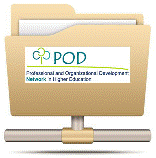Professional and Organizational Development Network in Higher Education

Professional and Organizational Development Network in Higher Education: Archives
Date of this Version
2010
Document Type
Article
Citation
Essays on Teaching Excellence: Toward the Best in the Academy (2009-2010) 21(5)
A publication of the Professional and Organizational Development Network in Higher Education
Abstract
A cursory glance at the literature on cheating paints a bleak picture. In the past decades, the prevalence of cheating has hovered at discouragingly high level, with about 75% of students admitting to some sort of cheating, and with peaks of over 90% in some prevalence studies. Given these figures, where does a wellintentioned instructor start? A good place to start untangling this complex problem is to understand it better. Academic dishonest behaviors vary in their frequency, seriousness, and motivations behind them, but they have been extensively researched, and we can abstract general principles to conceptualize this problem. Once we understand the dynamics better, we can try to adopt contextualized approaches that get at the root of the problem instead of stopgap measures. Below are some highlights from both the leading theoretical models and the available empirical evidence.
Included in
Curriculum and Instruction Commons, Educational Assessment, Evaluation, and Research Commons, Educational Psychology Commons, Higher Education and Teaching Commons, Scholarship of Teaching and Learning Commons


Comments
Copyright 2010, Michele DiPietro. Used by permission